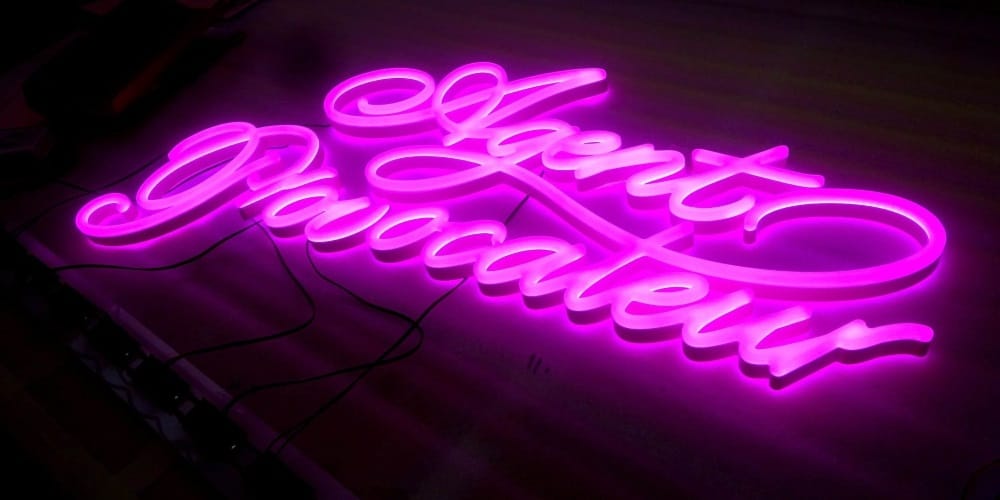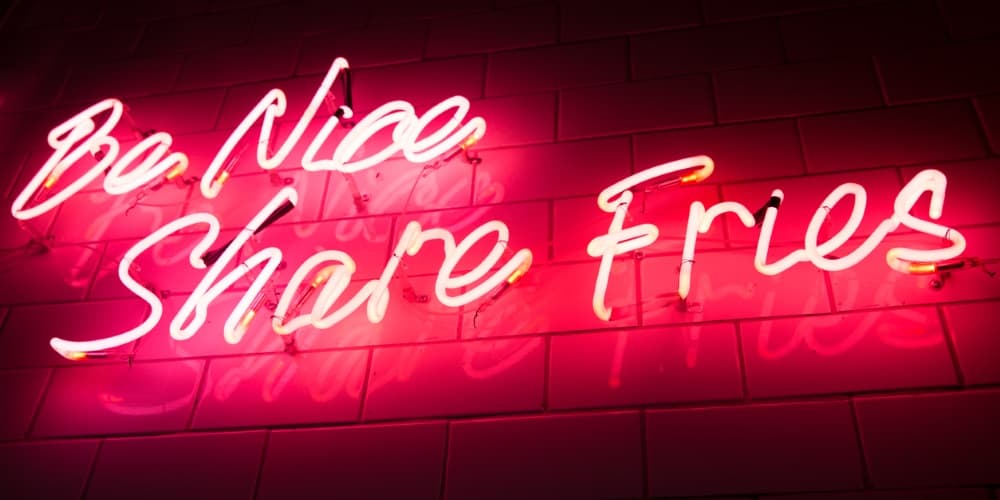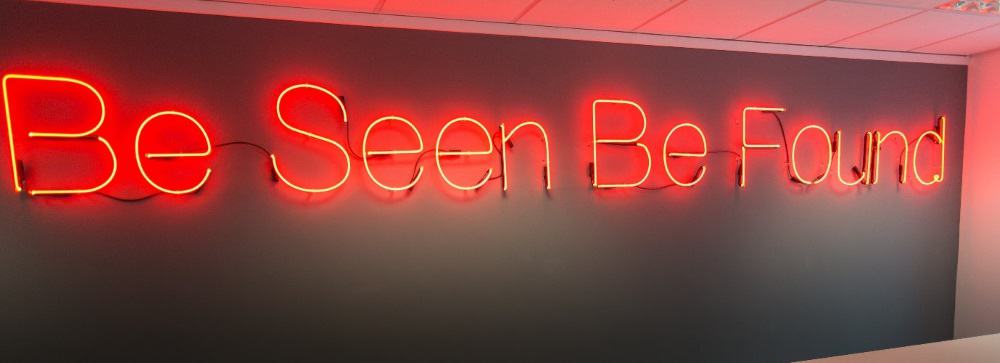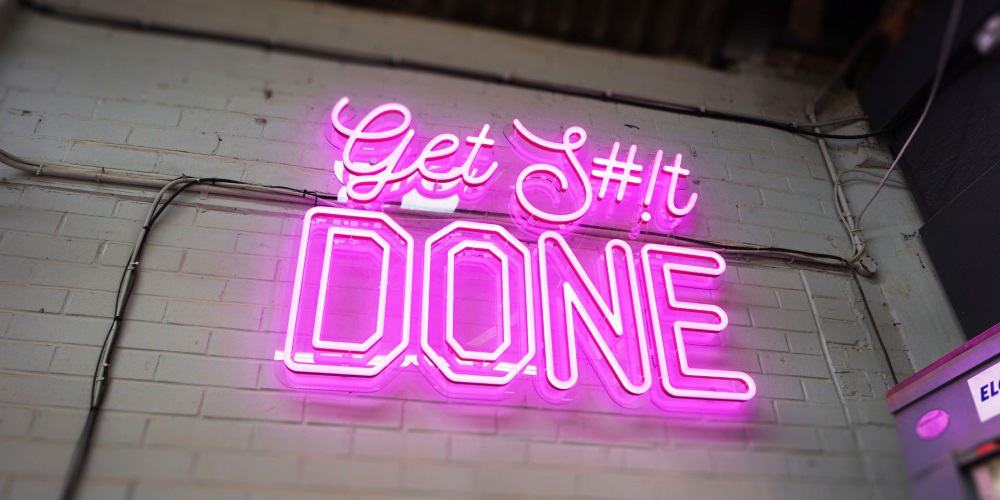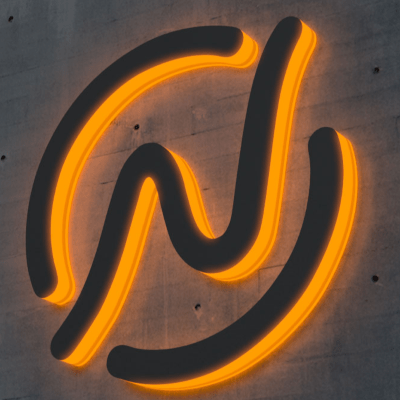Indoor and outdoor LED neon signs—benefits and what to look for
Whether they’re positioned inside or outside a shop, bar or café, illuminated signs are hard to miss. If you’re considering using a neon-style sign for your business, you’ll need to decide whether to place it indoors or outdoors, or both!
Below we look at your options for indoor and outdoor illuminated signs, including:
- the benefits of indoor illuminated signs
- the benefits of outdoor illuminated signs
- what to look for when buying an outdoor illuminated sign
- what to look for when buying an indoor illuminated sign
The benefits of outdoor illuminated signs
Choose an external LED neon sign if you want to:
- naturally catch the eye of passing customers—this is particularly useful for bars and restaurants that are open after dark
- provide 24-hour visibility of your company name—even when it gets dark, people can still see your sign
- convert passing foot traffic into paying customers—one survey revealed that 76% of consumers entered a business premises they’ve never visited before purely based on the sign, while 68% believe a shop’s signage reflects the quality of the company’s products or services
The benefits of indoor illuminated signs
Choose an internal LED neon sign if you want to:
- reflect your company’s brand personality or history—for example, Agent Provocateur’s famous pink neon signs are a nod to the company’s mid-1990s Soho roots
- provide a retail experience that builds the company brand—neon signs can help create uniqueness, connectedness and originality for consumers
- create a fun and exciting atmosphere—this could encourage shoppers to buy more products
- create an ‘Instagrammable’ location—neon signs are a regular feature in the most instagrammable shops and eateries, and getting your sign featured on Instagram is a great way to build your social media profile
- give customers clear, unmissable instructions—for example, signs for the toilets and exits
What to look for when buying an outdoor illuminated sign
If you’re planning to buy a neon sign for your business, there are a number of things you’ll need to consider.
Purpose
The purpose of the sign could be anything from letting customers know your business is open, to presenting your company brand name, to displaying a quirky phrase designed to get people through the door.
In a pub, café or restaurant, you could use the sign to promote a particular brand of drink or a special offer.
Size
Neon signs can be made to most dimensions—some are large enough to cover the side of a building, while others are simple “open” signs for shop doors. Smaller ones will obviously cost less than large neon signs.
Material
Traditional neon signs are made of soft lead glass tubes filled with different gases, including neon. Iron electrodes at each end of the glass tube are wired to a transformer which fires up the electrodes in the tube. This makes the neon gas glow. Traditional neon signs usually have a metal backing panel or framework.
You can find out more about how traditional and LED neon signs work here.
As traditional neon signs are made with glass and metal, they are not ideal for long-term use outdoors, particularly in wet, cold or windy locations. If they are used outdoors, they have to be protected from rain, snow and ice to ensure they will remain functional for a long time.
LED neon signs are a better choice for outdoor use as they aren’t made from glass, so won’t shatter if they’re damaged. Instead, they are made from acrylic, which is sturdy and waterproof.
Features
The most important feature of an LED neon sign intended for outdoor use is that it’s waterproof. Both traditional neon signs and LED neon signs have to be specifically made to be waterproof for use outdoors. If you buy an LED neon sign meant for indoor use, you shouldn’t use it outside.
What to look for when buying an indoor neon sign
LED neon signs aren’t just for attracting customers into your business. When positioned indoors, they can help create an exciting atmosphere, generate attention and even provide a social media photo opportunity. If you want to buy a neon sign for inside your business, there are a number of things you’ll need to consider.
Purpose
Indoor signs can serve a number of purposes. As well as being instructional (e.g. directing people to toilets or exits), they can enhance both your brand and your customers’ experience of your business.
In retail, illuminated signs are used in visual merchandising to draw customers to specific products inside the store, or to coax them into the store with eye-catching window displays.
In hospitality, illuminated signs can highlight promotions such as happy hour, or set the tone of the venue. In the past few years, neon has become a key trend on Instagram, with people seeking out quirky ‘Instagrammable’ signs in cafés, bars and restaurants to share with their friends.
Neon signs can even be used in offices to complement a company’s brand or convey the company slogan or ethos.
Corporate signage in lobbies often features:
- backlit letters
- a logo where LEDs illuminated the text from behind
- a logo mounted on an LED panel to create a ‘halo’ effect around the letters
In some cases, the LEDs are integrated into the letter edges, rather than the letters being mounted to the LED lights. Backlit signage is a versatile option for business signage as it can be designed to look very corporate or quirky.
Size and location
Where you install your signage will depend on its size and intended purpose. But if it’s a busy location, particularly with children around, it’s a good idea to place the sign out of easy reach.
If you want to install the sign in an area where there’s a lot of foot traffic or where items are often carried or moved (such as near the kitchen doors in a restaurant, or inside a busy office corridor), you can add a clear cover to protect the sign.
Custom-made LED neon signs can be manufactured to most sizes, and you can expect to pay a few hundred pounds for a large-size sign—you can get a rough idea of how much different size signs cost here. You can find small faux neon signs for less than £100 online, although these will obviously not be custom-made and may be too small to make a real impact in many premises.
Material
Indoor LED neon signs don’t have to be waterproof, but they do need to be able to stand up to wear and tear (such as a build-up of grease or bumps and knocks from people passing by). LED neon signs fare better than traditional neon in busy areas as they’re made from plastic tubing rather than glass and are less fragile as a result.
Modern LED neon signs don’t contain hazardous gases such as mercury. This means if they’re knocked, they won’t shatter and the contents won’t be hazardous to your customers’ health.
Features
The main feature to look for is whether the sign is easy to install. Most LED neon signs can simply be plugged into a socket and don’t need to be hardwired, unless you want them to be.
Indoor faux neon signs will need cleaning from time to time, and this is simple to do. If you need to clean your sign, simply unplug it and use warm, soapy water to clean the acrylic tubes. Dry the tubes with a clean lint-free cloth.
